Ditapis dengan
E-book Fundamental Approaches to Software Engineering
Many important theoretical and practical advances have taken place in the areaof Formal Methods (FMs), and impressive applications have been developed.Furthermore, FMs and their associated tools are now routinely used in manyindustries. However, their full potential remains partly unexploited. In pg. 57 ofa recent FMs survey [47], I gave my own view about their future in a positionstatement whe…
- Edisi
- -
- ISBN/ISSN
- 9783031909009
- Deskripsi Fisik
- 303 hlm
- Judul Seri
- -
- No. Panggil
- 005.1 MES f
Kitab Suci untuk Anak-anak
Kitab suci untuk anak-anak ini dipersembahkan bagi segenap keluarga Kristiani yang diharapkan dapat menjadi sarana untuk mendorong anak-anak semakin mengenal, mencintai, dan meneladani Yesus Kristus yang adalah Jalan, Kebenaran, dan Hidup.
- Edisi
- -
- ISBN/ISSN
- 9794979384
- Deskripsi Fisik
- illust + 399 hlm;
- Judul Seri
- -
- No. Panggil
- 220 GRA k
E-book Post Cinema : Cinema in the Post-art Era
For some time now, in newspapers and books, a series of words keep ap-pearing that begin with the pref ix “post-.” As for these new words, the key to understanding seems to be a semantics of ambiguity. Post does not indicate something absolutely different but something in-between: postcapital-ism would be a new phase of capitalism; postmodernism, a new f igure of modernism; and post-history…
- Edisi
- -
- ISBN/ISSN
- 9789463727235
- Deskripsi Fisik
- 367 hlm
- Judul Seri
- -
- No. Panggil
- 778.53 CHA p
E-book A Horizon of (Im)possibilities : A Chronicle of Brazil’s Conservativ…
The 2018 presidential election result in Brazil surprised many. Since then, numerous debates and a growing body of texts have attempted to understand this result and unearth the seeds that sowed what was understood by different analysts as the country’s ‘conservative turn’. In this introduction, we will not elaborate on all the factors that const…
- Edisi
- -
- ISBN/ISSN
- 9781908857927
- Deskripsi Fisik
- 257 hlm
- Judul Seri
- -
- No. Panggil
- 304.681 ARR a
E-book A Holter for Parkinson’s Disease Motor Symptoms : STAT-On
Parkinson’s disease (PD) is the second most frequent neurodegenerative disorder, with approximately 6.1 million people who live with PD in 2016 worldwide [1]. For several reasons that are not yet fully understood, the prevalence and incidence are expected to increase in the next years. According to the World Health Organization, globally, disability and death due to PD …
- Edisi
- -
- ISBN/ISSN
- 9781032632865
- Deskripsi Fisik
- 269 hlm
- Judul Seri
- -
- No. Panggil
- 610 AVI a
E-book Changing Cultures : European Perspectives on the History of Portland C…
In 1909, the book Reinforced Concrete in Europe by Albert Ladd Colby (1860–1924) was pub-lished with the aim of disseminating in the USA the advances in reinforced concrete made in each of the European countries at that time. Besides introducing the main systems, types of reinforcement bars and their applications, the work describes an intermediate phase of a para-digm shift in…
- Edisi
- -
- ISBN/ISSN
- 9781003368656
- Deskripsi Fisik
- 366 hlm
- Judul Seri
- -
- No. Panggil
- 691 ALB c
E-book Best Practice Guide for Positive Parenting
Our conception of what parenting should look like has changed considerably in our society. This is due not only to the large variety of family structures and the diversity of cultures that currently co-exist in our society, but also to a shift in mindset that touches the very heart of the parenting task. This can be expressed as the need to replace the concept of parental authority, which focu…
- Edisi
- -
- ISBN/ISSN
- -
- Deskripsi Fisik
- 80 hlm
- Judul Seri
- -
- No. Panggil
- 649.1 OCH b
E-book Blue Planet Law The Ecology of our Economic and Technological World
In the twenty-first century, the internationalcommunity and states face the challenge ofreconciling the economic and technologicaldevelopment of our post-industrial societieswith the prevention or mitigation of globalenvironmental problems such as climatechange, ocean degradation, and biodiversityloss. Nowadays, international environmentallaw leaves up to the sovereignty of each statemost o…
- Edisi
- -
- ISBN/ISSN
- 9783031248887
- Deskripsi Fisik
- 280 hlm
- Judul Seri
- -
- No. Panggil
- 320.58 GAR b
E-book A Guide to Risk Management of Cultural Heritage
Heritage managers and caretakers often have to prioritize and make choices about how best to use the available resources to protect collections, buildings, monuments and sites. This means, for instance, having to decide among options such as increasing security against theft and vandalism, improving building maintenance to reduce water leaks, installing air conditioning in collection storage ar…
- Edisi
- -
- ISBN/ISSN
- -
- Deskripsi Fisik
- 118 hlm
- Judul Seri
- -
- No. Panggil
- 613.6 JUN a
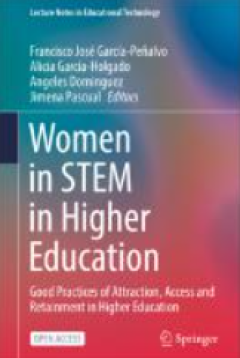
E-book Women in STEM in Higher Education : Good Practices of Attraction, Acce…
Women present a historic and worrying gap in science and technology-related disciplines, generally knowns as STEM (Science, Technology, Engineering,and Mathematics), except in the case of health professions. A holistic approach isneeded to support policymakers worldwide in bridging the gender gap in STEM, inwhich higher education institutions have a crucial role. Promoting this active impli-cat…
- Edisi
- -
- ISBN/ISSN
- 9789811915529
- Deskripsi Fisik
- 204 hlm
- Judul Seri
- -
- No. Panggil
- 607.1 GAR w

Land Use Cover Datasets and Validation Tools : Validation Practices with QGIS
This chapter sets out the aims of this book and explains themethods and approaches applied in its production. It alsoaspires to be a guide, offering readers instructions as to howbest to use the book. We therefore strongly encourage allreaders to read this chapter carefully, so as to gain a clearerunderstanding of all the different aspects analysed in thisbook. This chapter also provides essent…
- Edisi
- -
- ISBN/ISSN
- 9783030909987
- Deskripsi Fisik
- 459 hlm
- Judul Seri
- -
- No. Panggil
- 624 OLM l

E-book Contemporary Challenges in Securing Human Rights
Since 1948, the study of human rights has been dominated by legal scholarship that has sought to investigate the development of human rights law, emerging jurisprudence, regional systems, the decisions and recommendations of human rights mechanisms and institutions and to a lesser extent the ‘compliance gaps’ between state commitments and actions. Even so, in all of these spheres there are …
- Edisi
- -
- ISBN/ISSN
- 9780993110221
- Deskripsi Fisik
- 166 hlm
- Judul Seri
- -
- No. Panggil
- 341.48 LEN c
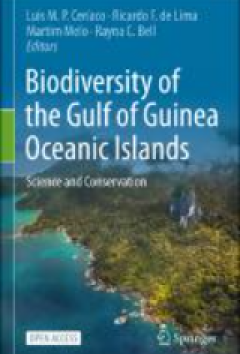
E-book Biodiversity of the Gulf of Guinea Oceanic Islands : Science and Conse…
The Portuguese explorer Francisco Newton was one of thefirst naturalists todedicate almost one decade to the study of the outstanding diversity of the Gulf ofGuinea oceanic islands. The collections he made, in what was largely unexploredterritory for science, allowed the description of dozens of new species and began toreveal intriguing biogeographic patterns. Gazing at the species he was colle…
- Edisi
- -
- ISBN/ISSN
- 9783031061530
- Deskripsi Fisik
- 707 hlm
- Judul Seri
- -
- No. Panggil
- 577 ALM b
E-book Moral Ecology of a Forest : The Nature Industry and Maya Post-Conserva…
For the Maya, the landscape in which they live, the k’aax (forest), has a moral ecology. It is the place where they feel “at home in the world,” where they are situated in an everyday engagement with their environment. It is also where their history, identity, spiritual beliefs, communion with other species, and ulti-mately their survival are rooted. The ethnic boundary that t…
- Edisi
- -
- ISBN/ISSN
- 9780816543465
- Deskripsi Fisik
- 214 hlm
- Judul Seri
- -
- No. Panggil
- 304.2 MAR m
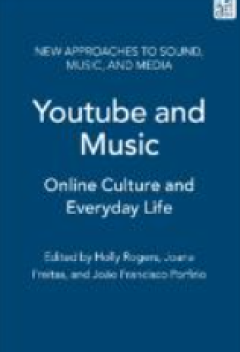
E-book YouTube and Music : Online Culture and Everyday Life
‘All right, so here we are in front of the elephants.’ This is the opening sentence of the first video ever uploaded to YouTube.1 What started in 2005 as an online platform for the upload of ‘homemade videos’ and the sharing of ‘ordinary people’s lives’ quickly became the nucleus of an intricate web of audiovisual interactions that reached through and beyond cyberspace. The year 2…
- Edisi
- -
- ISBN/ISSN
- 9781501387296
- Deskripsi Fisik
- 329 hlm
- Judul Seri
- -
- No. Panggil
- 780.2 FRE y
E-book Enhanced Living Environments : Algorithms, Architectures, Platforms, a…
Enhanced and Assisted living environments (ELE/ALE) have been in focus ofthe researches for more than decade [8]. Adaptation of novel technologies inhealthcare has taken a slow but steady pace, from the first wearable sensors forchronic disease conditions and activity detection with offline processing towardsimplantable or non-invasive sensors supported by advanced data analytics forpervasive a…
- Edisi
- -
- ISBN/ISSN
- 9783030107529
- Deskripsi Fisik
- 339 hlm
- Judul Seri
- -
- No. Panggil
- 004.071 ACH e
E-book Global History and New Polycentric Approaches : Europe, Asia and the A…
We believe that by joining forces and harmonizing diverse theories, sources and methods of different academic traditions like those from China and Japan, the field of global history receives a new impulse through diverse case studies. The constant participation of special-ists in this field is crucial, as they share their experiences and new …
- Edisi
- -
- ISBN/ISSN
- 9789811040535
- Deskripsi Fisik
- 367 hlm
- Judul Seri
- -
- No. Panggil
- 909.5 DEP g

E-book Ikigai: The Japanese Secret to a Long and Happy Life
Bring meaning and joy to all your days with this internationally best-selling guide to the Japanese concept of ikigai - the happiness of always being busy - as revealed by the daily habits of the world's longest-living people. "Only staying active will make you want to live a hundred years." (Japanese proverb) According to the Japanese, everyone has an ikigai - a reason for living. And ac…
- Edisi
- -
- ISBN/ISSN
- 9781524704551
- Deskripsi Fisik
- 123 halaman
- Judul Seri
- -
- No. Panggil
- 613 GAR i
E-book Altering Crop Management Practices to Promote Pollinators
Agricultural intensification, or the increase in crop production per unit land area, has resulted in high-input, large-scale monoculture cropping and overall declines in crop diversity in the USA (Aguilar et al., 2015) and greater homogeneity in the crops grown across regions at a global scale (Martin et al., 2019). This has often resulted …
- Edisi
- -
- ISBN/ISSN
- 9781801465700
- Deskripsi Fisik
- 23 hlm
- Judul Seri
- -
- No. Panggil
- 638.1 FRA a
E-book Comics of the New Europe : Reflections and Intersections
Despite claiming to offer surveys of “world comics,” global histories of graphic narrative replicate some of the aporias present in the relatively impossible category of “world” or “global” literature.2 Even more narrowly defined surveys of European comics focus primarily on the “Franco-Belgian” tradition, thus swiftly setting aside …
- Edisi
- -
- ISBN/ISSN
- 9789461665270
- Deskripsi Fisik
- 291 hlm
- Judul Seri
- -
- No. Panggil
- 741.5 ALA c
E-book Empire and Environment : Ecological Ruin in the Transpacific
How can we begin to chronicle the ecological ruination of the Pacific and Transpacific? What radiates outward to reveal the extent of the catastrophe? The editors and authors of Empire and Environment offer profound analyt-ics, poetics, and tools toward understanding the historical and contemporary dynamics of the relationship between capitalism, empire, and our planet in crisis. …
- Edisi
- -
- ISBN/ISSN
- 9780472902996
- Deskripsi Fisik
- 323 hlm
- Judul Seri
- -
- No. Panggil
- 325.3 CAS e
E-book Risk Assessment in Air Traffic Management
Currently, complexity is derived from reports provided by the controllers andpilots involved in the incidents, from which the mid-air collision risk is estimated.These incidents are extremely rare events, which make them infeasible to deriveany reliable statistics. Furthermore, not all incidents are reported, making it diffi-cult to infer how many true incidents have really occurred. Finally, t…
- Edisi
- -
- ISBN/ISSN
- 9781838803704
- Deskripsi Fisik
- 178 hlm
- Judul Seri
- -
- No. Panggil
- 629.1 NIE r
E-book The Roadmap to a Low-Carbon Urban Water Utility : An international gui…
he transition to low-carbon urban water utilities is an innovative idea, only currently embraced by a few forward-thinking utilities. This roadmap is directed at urban water utility managers in charge of planning future actions, as well as at the stakeholders who will support the utility action plans. Because only a few ‘early adopter’ utilities have embarked on a low-carbon transition, thi…
- Edisi
- -
- ISBN/ISSN
- 9781780409924
- Deskripsi Fisik
- 51 hlm
- Judul Seri
- -
- No. Panggil
- 628.1 BAL t
E-book The State of Food Security and Nutrition in the World 2022
The 2020 edition of this report included, for the first time, global estimates of the cost and affordability of a healthy diet. These are useful indicators of people’s economic access to nutritious foods and healthy diets. The effects of inflation in consumer food prices stemming from the economic impacts of the COVID-19 pandemic and the measures put in place to contain it, are clear and sign…
- Edisi
- -
- ISBN/ISSN
- 9789251364994
- Deskripsi Fisik
- 260 hlm
- Judul Seri
- -
- No. Panggil
- 613.2 HOL t
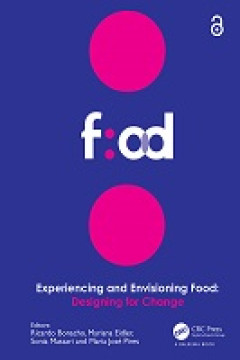
E-book Experiencing and Envisioning Food
Experiencing and Envisioning Food: Designing for Change contains papers on gastronomy, food design, sustainability, and social practices research as presented at the 3rd International Food Design and Food Studies Conference (EFOOD 2022, Lisbon, Portugal, 28-30 April 2022). The contributions explore potential solutions to current problems in the food system, and outline scenarios on the future o…
- Edisi
- -
- ISBN/ISSN
- 9781032479897
- Deskripsi Fisik
- 263 halaman
- Judul Seri
- -
- No. Panggil
- 664 BON e
E-book Blood, Land and Power : The Rise and Fall of the Spanish Nobility and …
Western and eastern values of society underscore the family as a fundamental social structure and institution.1 The family reveals the most significant sociocultural features of European communi-ties in a given context, and these become central communication channels back to the family. This idea asserts James Casey’s axiom that family and society are part of a single unit.2The family is at t…
- Edisi
- -
- ISBN/ISSN
- 9781786837110
- Deskripsi Fisik
- 364 hlm
- Judul Seri
- -
- No. Panggil
- 946 PER b
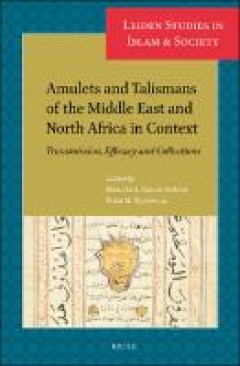
E-Book Amulets and Talismans of the Middle East and North Africa in Context: …
In this volume amulets and talismans are studied within a broader system of meaning that shapes how they were manufactured, activated and used in different networks. Text, material features and the environments in which these artifacts circulated, are studied alongside each other, resulting in an innovative approach to understand the many different functions these objects could fulfil in pre-mo…
- Edisi
- -
- ISBN/ISSN
- 9789004471481
- Deskripsi Fisik
- 319 halaman
- Judul Seri
- -
- No. Panggil
- 939.4 GAR a
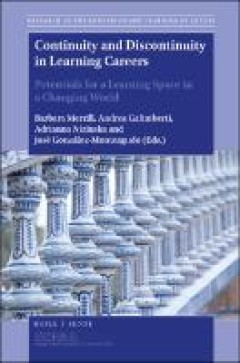
E-Book Continuity and Discontinuity in Learning Careers: Potentials for a Lea…
Continuity and Discontinuity in Learning Careers: Potentials for a Learning Space in a Changing World focuses on the continuities and discontinuities of the learning careers and identities of non-traditional adult students in diverse learning contexts. Readership: All those interested in adult education and the challenges facing adult education today such as researchers in education and social …
- Edisi
- -
- ISBN/ISSN
- 9789004375475
- Deskripsi Fisik
- 214 halaman
- Judul Seri
- -
- No. Panggil
- 374 MER c
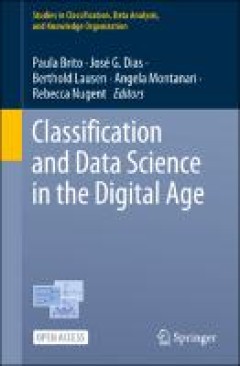
E-Book Classification and Data Science in the Digital Age
The contributions gathered in this open access book focus on modern methods for data science and classification and present a series of real-world applications. Numerous research topics are covered, ranging from statistical inference and modeling to clustering and dimension reduction, from functional data analysis to time series analysis, and network analysis. The applications reflect new analy…
- Edisi
- -
- ISBN/ISSN
- 9783031090349
- Deskripsi Fisik
- 416 halaman
- Judul Seri
- -
- No. Panggil
- 004 BRI c
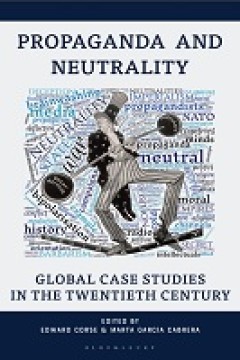
E-Book Propaganda and Neutrality: Global Case Studies in the Twentieth Century
This is the first broad-ranging, comprehensive and comparative study of the concepts of propaganda and neutrality. Bringing together world-leading and early career historians, this open access book explores case studies from the time of the First World War to the end of the Cold War in countries such as Belgium, Greece, Spain, Portugal, Ireland, Switzerland, Vichy France, USA, Argentina, Turkey…
- Edisi
- -
- ISBN/ISSN
- 9781350325531
- Deskripsi Fisik
- 329 halaman
- Judul Seri
- -
- No. Panggil
- 355.02 COR p
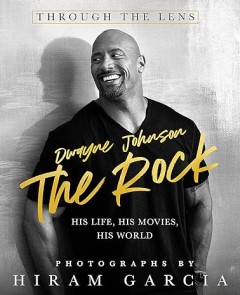
The Rock: Through the Lens: His Life, His Movies, His World
Dynamic, funny, and inspiring photos of global entertainment icon, entrepreneur, and trailblazer, Dwayne "The Rock" Johnson, featuring twenty years' worth of candids, family moments, and snapshots from film and television sets, many never-before-seen.
- Edisi
- -
- ISBN/ISSN
- 9781250220424
- Deskripsi Fisik
- 19,5 cm x 24 cm, 256 hlm, ilus
- Judul Seri
- -
- No. Panggil
- 927.9
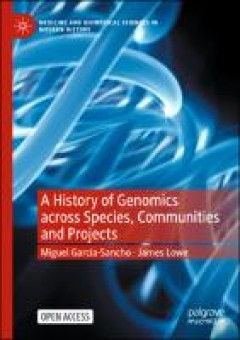
E-book A History of Genomics across Species, Communities and Projects
This open access book offers a comprehensive overview of the history of genomics across three different species and four decades, from the 1980s to the recent past. It takes an inclusive approach in order to capture not only the international initiatives to map and sequence the genomes of various organisms, but also the work of smaller-scale institutions engaged in the mapping and sequencing of…
- Edisi
- -
- ISBN/ISSN
- 9783031061301
- Deskripsi Fisik
- -
- Judul Seri
- -
- No. Panggil
- 572.86
E-book Desain Sistem Pemilu : Buku Panduan Baru International IDEA
Pilihan atas sistem pemilu adalah salah satu keputusan kelembagaan paling penting bagi demokrasi di mana pun. Dalam hampir semua kasus pilihan atas sistem pemilu tertentu memiliki pengaruh mendalam bagi masa depan kehidupan politik di negara bersangkutan, dan sistem politik, begitu sudah dipilih, sering kali tetap sangat konstan seiring berbagai kepentingan politik mengukuhkan diri di seputar d…
- Edisi
- -
- ISBN/ISSN
- 9786027324855
- Deskripsi Fisik
- 233 hlm
- Judul Seri
- -
- No. Panggil
- 324.6 REY d
E-book One Crazy Summer
Good thing the plane had seat belts and we’d been strapped in tight before takeoff. Without them, that last jolt would have been enough to throw Vonetta into orbit and Fern across the aisle. Still, I anchored myself and my sisters best as I could to brace us for whatever came next. Those clouds weren’t through with us yet and dealt another Cassius Clay–left–and–a–right jab to the bo…
- Edisi
- -
- ISBN/ISSN
- 9780545458283
- Deskripsi Fisik
- 143 hlm
- Judul Seri
- -
- No. Panggil
- 823 WIL o
E-book Trade and Employment : From Myths to Facts
Those numbers, however, do not indicate that interviewees have an entirely negative perception of globalization. Indeed, evidence based on surveys that make a distinction between growth and employment impacts of globalization reveals that a majority of respondents in industrialized countries believes in the positive growth effects of globalization that are so often emphasized in the public deba…
- Edisi
- -
- ISBN/ISSN
- 9789221253211
- Deskripsi Fisik
- 318 hlm
- Judul Seri
- -
- No. Panggil
- 381 JAN t
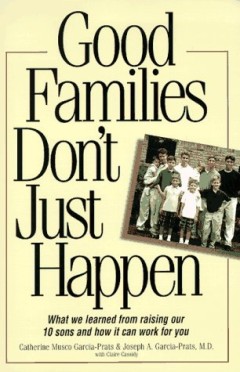
Good families don't just happen : what we learned from raising our 10 sons an…
The book that shows you how to create the family life you want—by parents who’ve learned by raising ten sons! Catherine Musco Garcia-Prats and Joseph A. Garcia-Prats, M.D. would be remarkable if only for the fact that they have ten sons. But what’s really impressive is that they’ve succeeded at raising ten “good son” who are not only successful at their studies and sports—but are…
- Edisi
- cet. 1
- ISBN/ISSN
- 978155850804
- Deskripsi Fisik
- xviii+246 hlm; 11 cm x 21,5 cm
- Judul Seri
- -
- No. Panggil
- 646.7 PRA g
 Karya Umum
Karya Umum  Filsafat
Filsafat  Agama
Agama  Ilmu-ilmu Sosial
Ilmu-ilmu Sosial  Bahasa
Bahasa  Ilmu-ilmu Murni
Ilmu-ilmu Murni  Ilmu-ilmu Terapan
Ilmu-ilmu Terapan  Kesenian, Hiburan, dan Olahraga
Kesenian, Hiburan, dan Olahraga  Kesusastraan
Kesusastraan  Geografi dan Sejarah
Geografi dan Sejarah